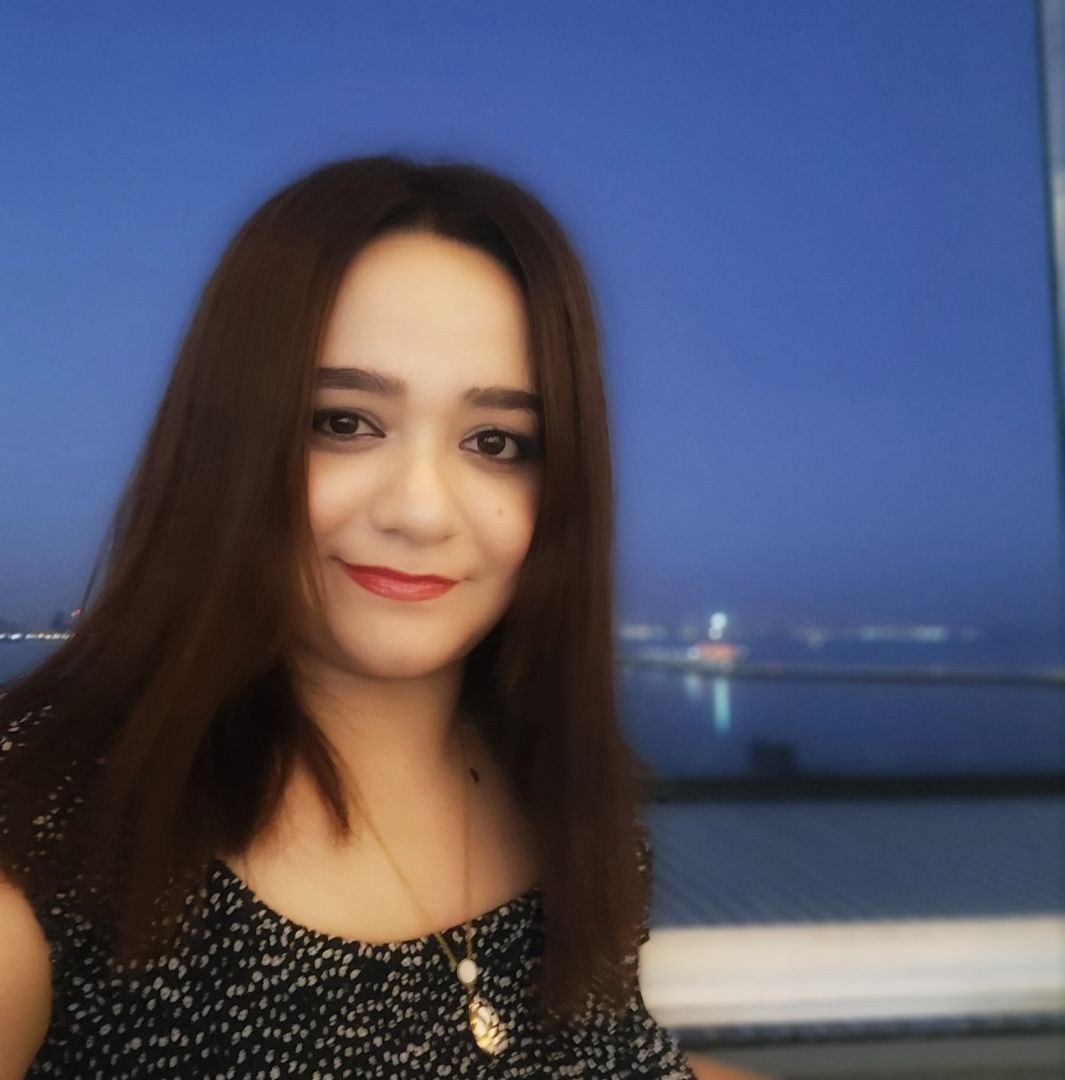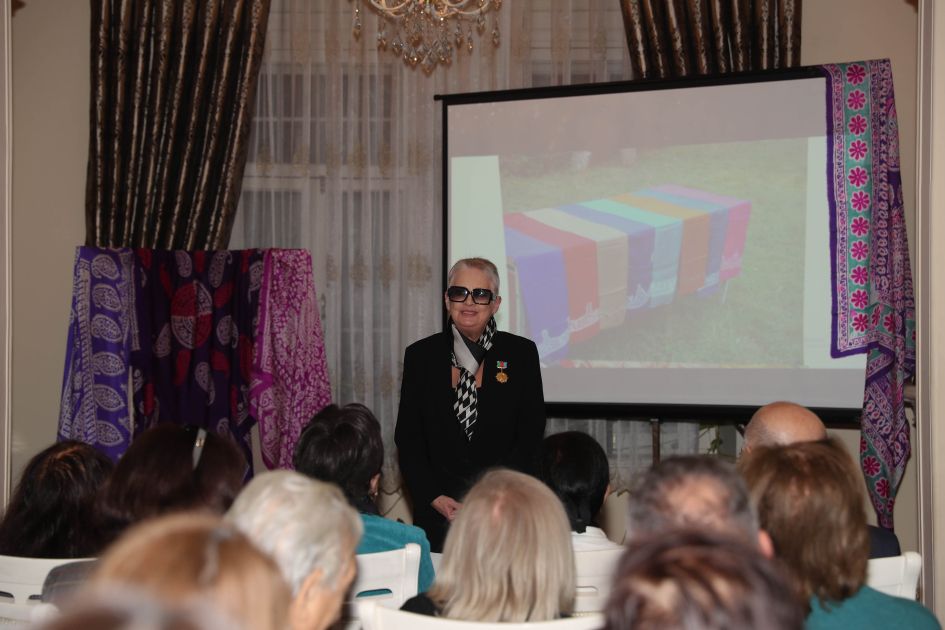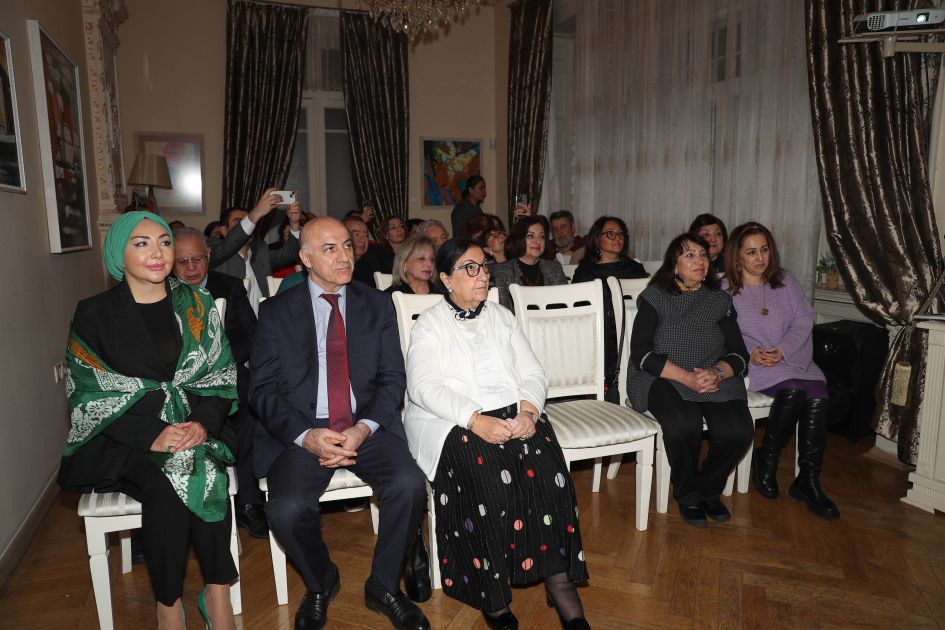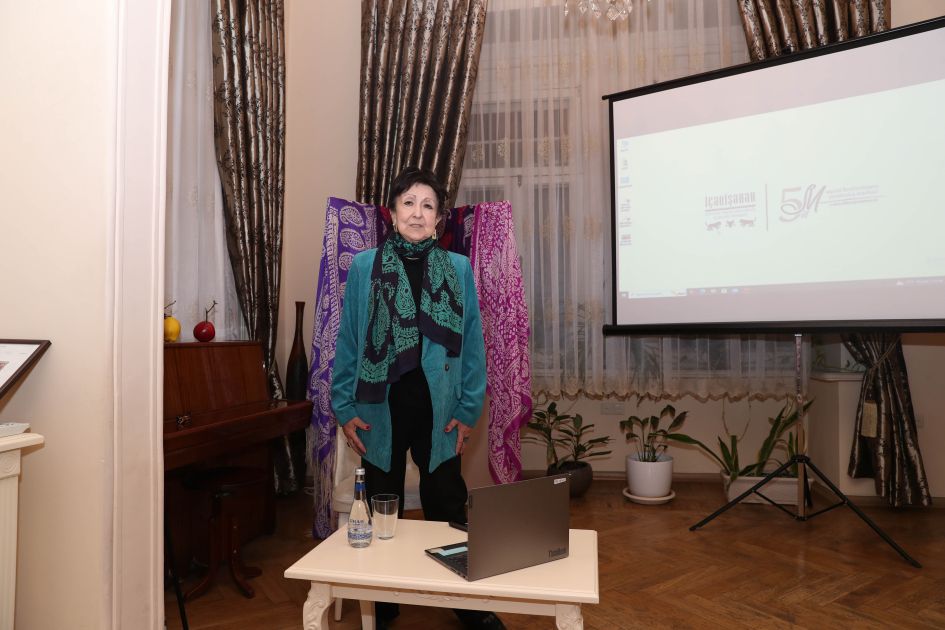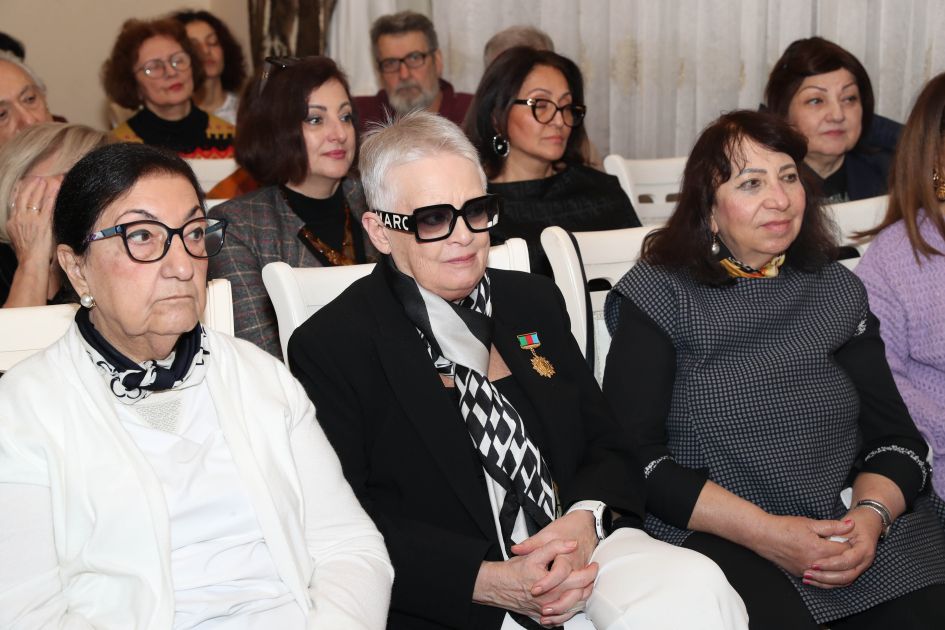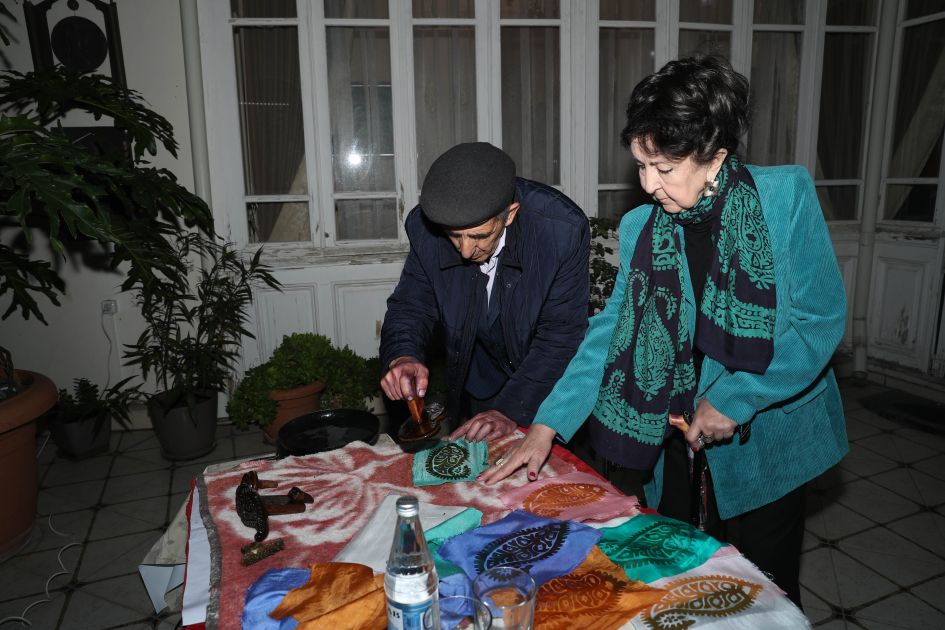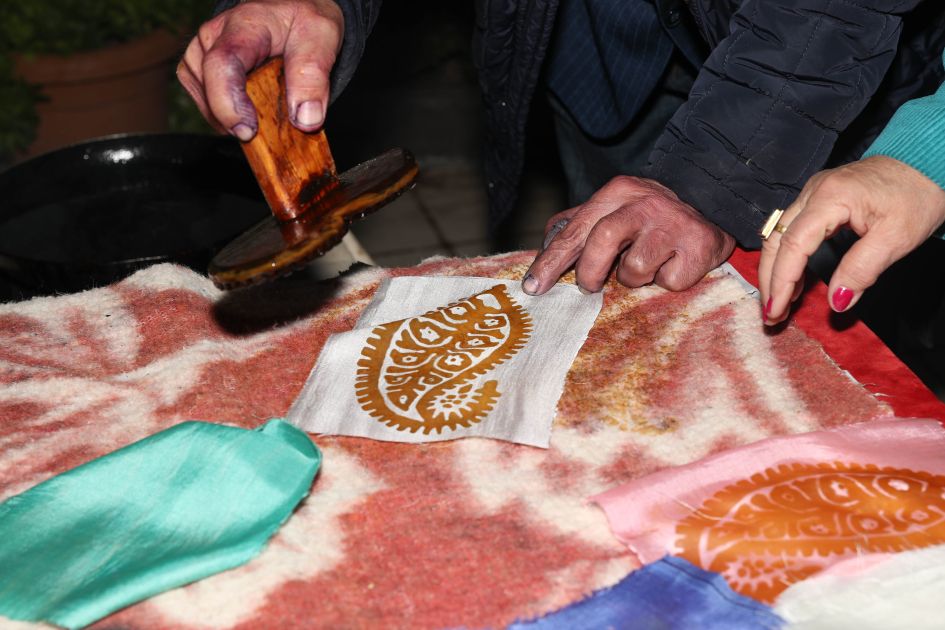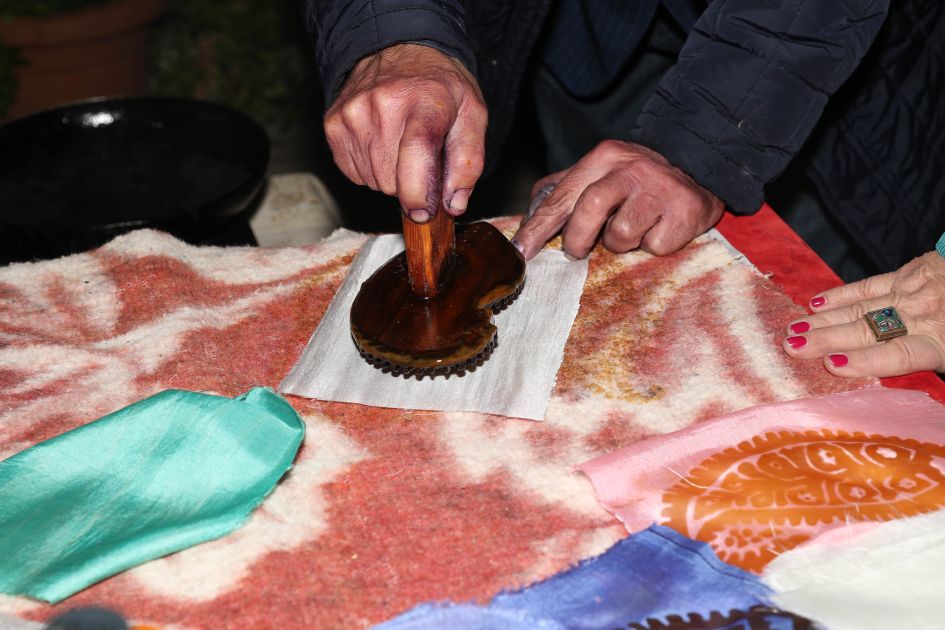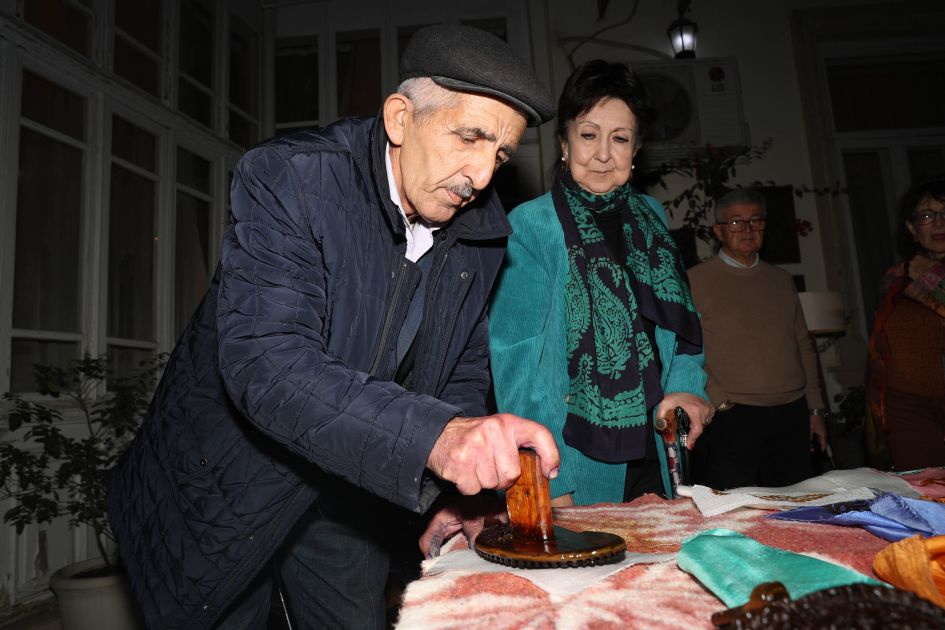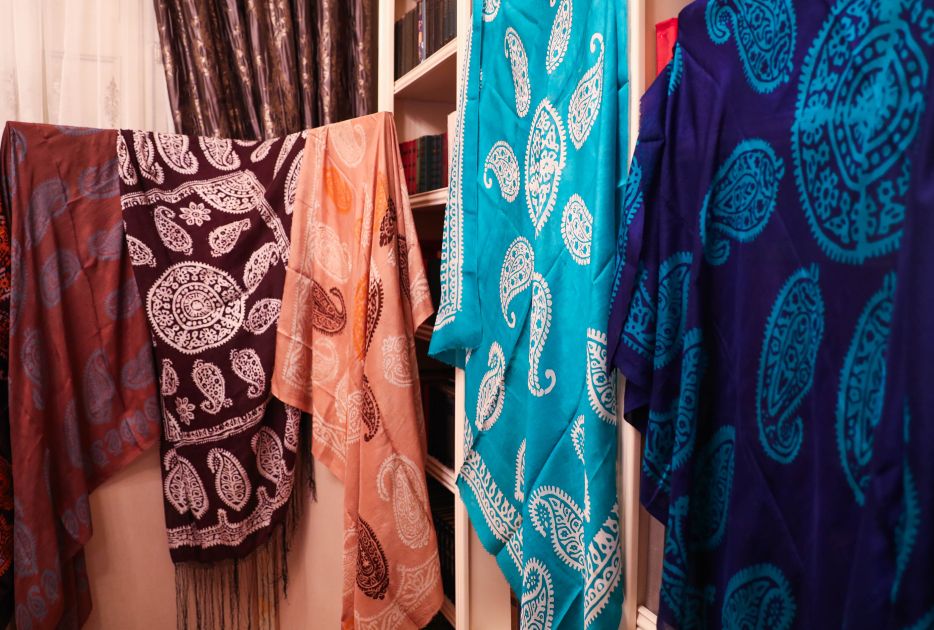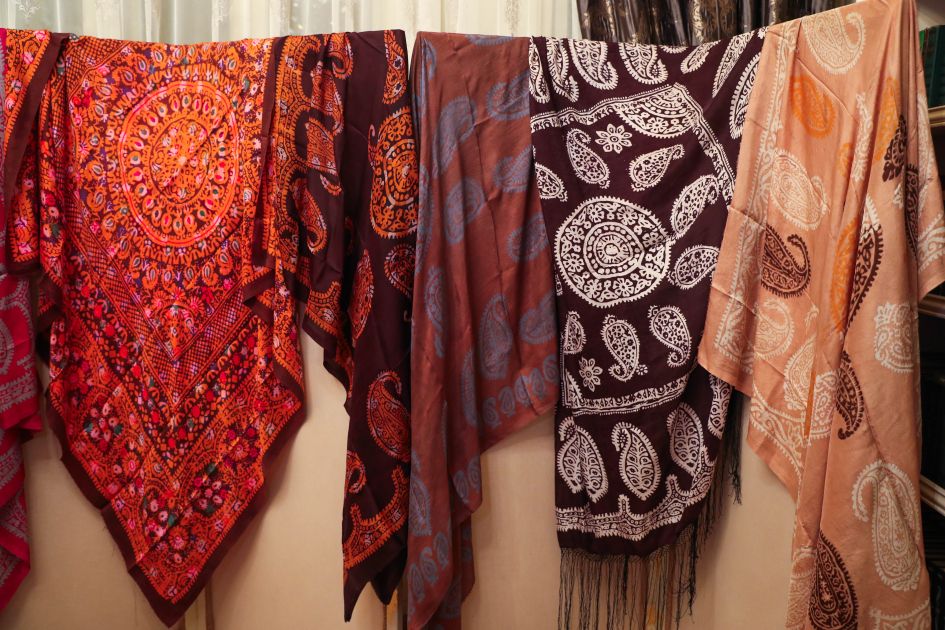Ten years passed since inclusion of kelaghayi in UNESCO List [PHOTOS]
![Ten years passed since inclusion of kelaghayi in UNESCO List [PHOTOS]](https://www.azernews.az/media/2024/11/27/unesco12.jpg)
For Azerbaijani women, traditional silk headscarf, also known as kelaghayi, has always been a must-have accessory that protects them from both the hot sun and cold wind as silk is cool in summer and warm in winter, Azernews reports.
In November 2014, traditional art and symbolism of Kelaghayi, making and wearing women’s silk headscarves was inscribed on the UNESCO Representative List of the Intangible Cultural Heritage of Humanity.
Ten years have passed since the inclusion of Azerbaijan's traditional art and symbolism of kelaghayi in the UNESCO Representative List of the Intangible Cultural Heritage of Humanity.
This significant date was celebrated at Maksud Ibrahimbayov Creativity Center with a colorful event, co-organized by "İnkişaf" Scientific Center and the Basgal Silk Center "Kelaghayi".
Director of the Maksud Ibrahimbayov Creativity Center Anna Ibrahimbayova welcomed the guests of the event.
She expressed her satisfaction with the opportunity to celebrate such an important event within the walls of the Creativity Center, emphasizing that the preservation of cultural heritage is a contribution to the future of the nation.
Then the cousin of the People's Writer of Azerbaijan Maksud Ibrahimbayov, Rena Ibrahimbayova, spoke about the historical and cultural significance of the kelaghayi, and also touched upon the philosophical aspect of this unique attribute.
According to her, the kelaghayi is not just a woman's headscarf. It is imbued with symbolism and carries a deep meaning. This is a symbol of protection, wisdom and beauty that permeate our culture.
As Rena Ibrahimbayova noted, the restoration and popularization of the art of kelaghayi is the result of the careful attitude of the country's leadership to the cultural heritage.
"Today, kelaghayi has been enriched with new content, and has become even more diverse and beautiful. This became possible thanks to the efforts of the First Lady of Azerbaijan Mehriban Aliyeva, whose contribution to this process is truly invaluable. Thanks to her initiatives, kelaghayi has received a worthy place in the world cultural space," she said.
In an interview with journalists, the writer's cousin noted that the inclusion of kelaghayi in the UNESCO list was a historic achievement.
"Ten years ago, on November 26, 2014, a significant event took place - kelaghayi was recognized as an object of intangible cultural heritage of humanity. This step not only emphasizes the uniqueness of our culture, but also consolidates its significance in the international arena. We are proud that our national symbol has taken a worthy place in the treasury of world heritage," she emphasized.
Rena Ibrahimbayova drew attention to the universality of the kelaghayi, which performs not only a practical but also a deep philosophical function:
"People express their emotions, thoughts and values through the kelaghayi. It is not just an element of clothing, but a means of communication that unites generations and cultures. It was this understanding that became decisive for UNESCO specialists, who unanimously voted for its inclusion in the representative list."
In her speech, she underlined that recognition of the kelaghayi at the international level is the result of long and painstaking work.
"It was not an easy task to single out the kelaghayi among many unique elements of world heritage. But thanks to the professionalism and persistence of our First Lady, this became a reality. Today, we can proudly say that Azerbaijan has made a significant contribution to world culture, and the kelaghayi plays an important role in this contribution," she concluded.
Kelaghayi comes in a wide range of different patterns and looks. This beautiful head scarf adds the perfect hint of cool to any outfit.
The main figure used in silk headscarf is buta, a twisted teardrop that has been a symbol of the divine fire, which has been worshipped in Azerbaijan since ancient times.
The edges of kelaghayi, and sometimes its central part (khoncha) are decorated with geometrical or nabati ornaments.
Each region produces its own unique type of kelaghayi. For instance, Shah buta, buta, and khirda buta patterns are typical for Sheki and Basgal kelaghayis.
There are many traditions associated with this magnificent headscarf.
Unmarried girls cover their heads with a headscarf of bright colors, such as yellow, pink, gold or purple, while the old women preferred dark kelaghayi.
After obtaining the consent of the girl, the woman representing the groom's side used to present jewelry wrapped in red kelaghayi.
In addition, during the henna ceremony of the wedding, the bride's head was covered with kelaghayi and then henna was applied to her hands and feet.
At wedding ceremonies, the groom and his closest friends also tied kelaghayi on their necks and a mirror of a wedding car.
In addition, trays with gifts from women arriving at the wedding, kelaghayi, was considered the most expensive gift. This wonderful tradition is still preserved in some regions.
Azerbaijan has been known as kelaghayi production center since ancient times. High quality kelagai was produced in Tabriz, Ganja, Shamakhi, Shaki and Nakhchivan.
The most famous silk headscarves are produced in the city of Basgal, a beautiful village near Shamakhi.
For many years, Shaki has remained in the status of the country's silk-breeding center. The largest silk factory in the world operated in the 19th century was in Shaki.
Basqal is also known for its Silk Center and Kelaghayi Museum provides visitors and tourists with a comprehensive picture of this ancient Azerbaijani art. In the museum, they are informed about the history of kelaghayi making art.
The most valuable six or seven kelaghayis are produced in Basgal until now.
Kelaghayi production is a complex process, which involves representatives of a number of professions, including a tailor, a dyer of kelaghayi fabric, a pattern artist and an ornamentalist.
Making this head blanket weighing 125 grams, requires two days to paint and apply patterns.
Nowadays ancient silk headscarf continues to captivate the fashion industry. Kelaghayi has turned into a source of inspiration for many fashion designers around the world.
One can enjoy these stunning headscarves not only in the Museum of Basgal, but also in the country's national museums.
Here we are to serve you with news right now. It does not cost much, but worth your attention.
Choose to support open, independent, quality journalism and subscribe on a monthly basis.
By subscribing to our online newspaper, you can have full digital access to all news, analysis, and much more.
You can also follow AzerNEWS on Twitter @AzerNewsAz or Facebook @AzerNewsNewspaper
Thank you!

